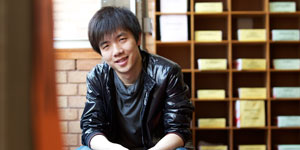Last night I met up with the writers from Our Stories Make Waves to get to know everybody better and to discuss our initial ideas about the project. It was a great meeting which has provoked several questions in my mind about the way in which we’ll be working together as well as the kinds of questions we’ll be asking each other. I’d been doing some research around what is meant by the term ‘literary archaeology’ and discovered that there are several different ways in which scholars and writers use the phrase. It is generally used as a way of describing the recovery of lost documents, manuscripts or literature in the archives; just as archaeologists uncover buried fragments and remains, so the literary archaeologist or writer excavates and unearths previously unknown information in order to enrich our understanding of a particular historical period. However the African American writer Toni Morrison extends this definition to include the imagination: in her essay ‘The Site of Memory’, Morrison writes that in order to access the ‘interior life’ of the slave – a life that is otherwise unrecoverable due to the lack of unmediated accounts of slave life – she must draw upon her ‘own recollections’ and ‘the act of imagination’. She calls this ‘a kind of literary archaeology: on the basis of some information and a little bit of guesswork you journey to a site to see what remains were left behind and to reconstruct the world that these remains imply’.
Our project, however, will be extending and complicating the meaning of ‘literary archaeology’ even further! This is because the remains that we’ll be working with in order to understand the lived environment of the enslaved are not focused on the written archive, but on the bodies of slaves themselves. It was really interesting to hear the writers’ initial responses to these complex ways of thinking about the relationship between literature and archaeology, in particular around what it means to be looking at the bodies of ancestors in this way and about the language that archaeologists, as well as literary scholars like me, use to talk about the individuals that we will be studying. I think that what came out of our first meeting was that this project is going to be as much about the creative process as it is about the work that the writers will eventually produce. Our reflections on what motivates us and how we approach our respective disciplines will inform the new methodology for understanding the lives of enslaved peoples that we are attempting to co-produce. I have no doubt that we will continue to challenge each other about our assumptions and approaches and this can only be a good thing as we look forward to our first workshop with the project archaeologists Emma Lightfoot and Catriona McKenzie!
Josie Gill

